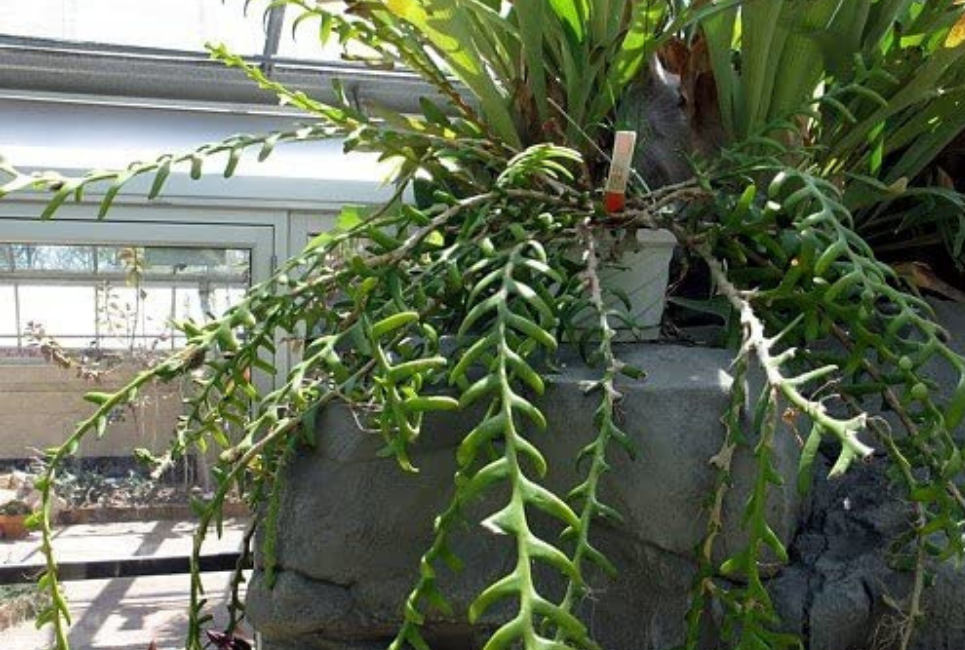Fishbone Cactus is not your average cactus. This is a jungle cactus related to orchids and it loves humidity. While it may be slightly different from other cacti and succulents, it is actually a very easy-going plant that beginner gardeners will love practicing their gardening skills on.
How to Identify Fishbone Cactus
Identifying a Fishbone Cactus is a simple task. The long, green leaves of this cactus grow in a zig-zag or the shape of a ricrac trim. This is also the shape of the backbone of many types of fish, hence its name.
Where Does Fishbone Cactus Grow
Rather than coming from an arid, desert region of Mexico, Fishbone Cactus is a native of the tropical rainforests found in Chiapas, Mexico. This is why it enjoys humidity so much.
Uses of Fishbone Cactus
This is a highly decorative plant that is ideal for displaying in hanging baskets. Setting a Fishbone Cactus in a hanging basket allows its long leaves to drape over the edges of the basket with flair and drama.
How to Grow Fishbone Cactus from Seed
Since Fishbone Cactus is a slow-growing plant, it is not usually recommended that it be propagated by seeds, but if this is the way you prefer to grow a Fishbone Cactus, here are the basic steps to follow:
- Propagate the seeds outdoors if the weather is warm, but indoors if the weather is cool
- Plant the seeds in a seed tray filled with potting soil designed for succulents
- Place the seed tray in a sink filled with water so the soil will absorb the water from the bottom
- Place the seed tray in a warm area with indirect sunlight
- Place a piece of plastic wrap over the seed tray to keep in air humidity
- Add water to the seed tray as needed (the soil should be moist but not soggy)
Evidence that the seeds are sprouting will be tiny leaves above the soil. As soon as these leaves are spotted, the plastic wrap should be removed.
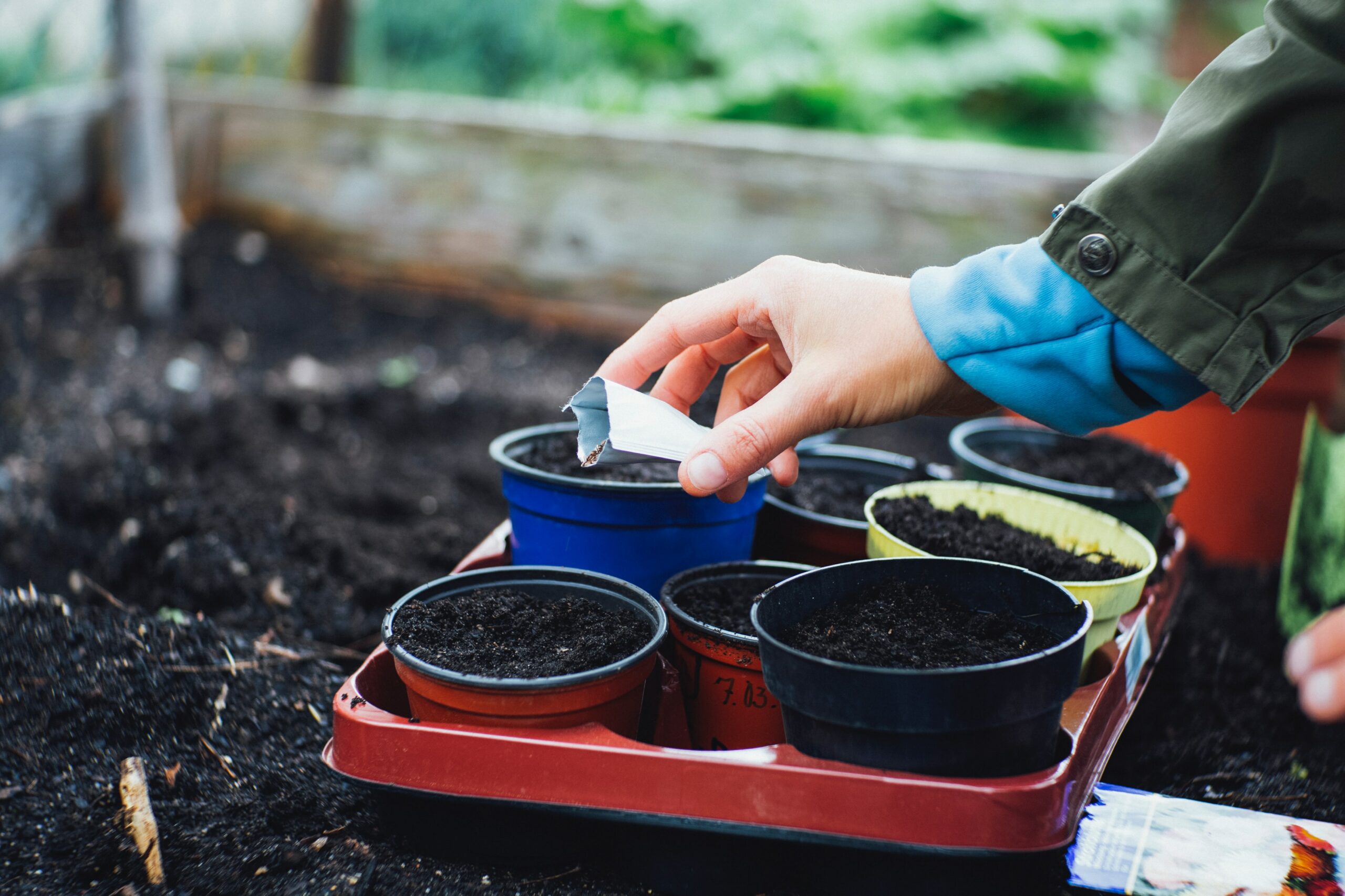
Once the seedlings have grown into healthy plants, the following care must be taken:
- Move the new plants to a larger pot, if needed
- Feed the new plants with a diluted fertilizer during their growing season.
- Water the plants only when the soil is dry.
Fishbone Cactus Growing Conditions
Since this cactus comes from a rainforest setting, its growing conditions are slightly different from most other types of cacti and succulents. Fishbone Cactus will need:
- Warm, humid air
- Moist soil
- Full sun
When to Plant Fishbone Cactus
It is best to plant Fishbone Cactus during warm and sunny months to ensure it grows strong and healthy.
How to Plant Fishbone Cactus
Planting a Fishbone Cactus is similar to planting other types of cacti or succulents; however, there are a few things that you will want to remember when handling one of these plants. When you go to plant a Fishbone Cactus, remember these steps:
- Put on a pair of gloves. Fishbone Cactus has tiny spikes on it that can prick your hands.
- Select a container that will drain off excess water. An unglazed pot is highly recommended.
- Select potting soil that will drain off excess water. These plants may like moisture more than other succulents and cacti, but they don’t do well when the soil around them gets soggy, so provided them with a good succulent/cactus potting soil, such as Birch Seed Soils All-Purpose Succulent Plant Soil.
- Fill the selected container with the potting soil.
- Create a hole in the potting soil.
- Set the plant into the hole.
- Cover the plant’s roots with potting soil.
- Make sure the plant is securely set in the potting soil.
- Water the plant as you would any succulent or cactus.
- Set the plant in a warm, sunny spot.
Fishbone Cactus Water Requirements
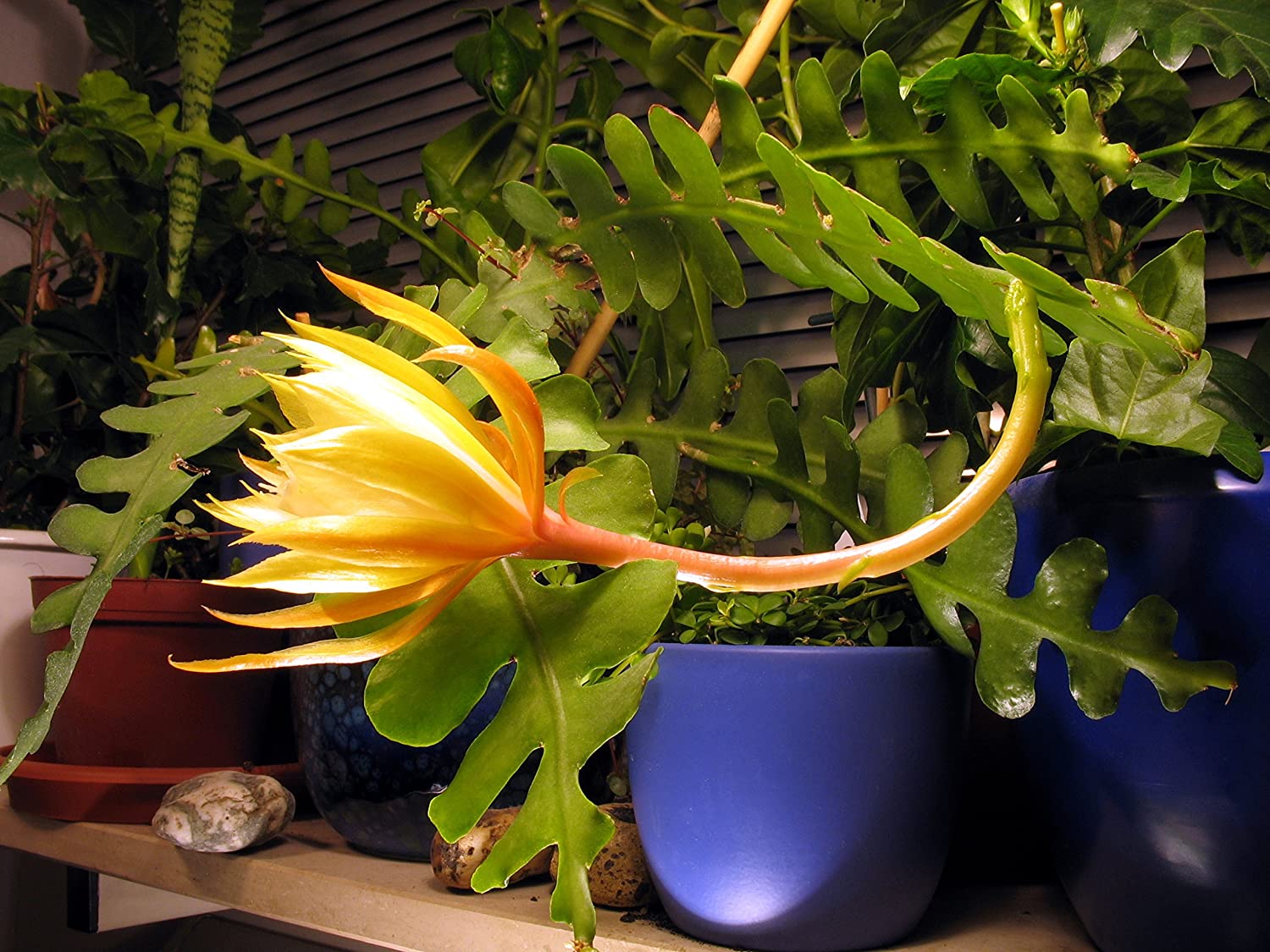
The water requirements of Fishbone Cactus are not typical of most succulents; however, since this plant is susceptible to root rot, it is best to use the soak and dry method when watering it. The steps for doing this are as follows:
- Fill a tray or a sink with a few inches of water.
- Set the plant container in the tray making sure that the water is not so deep that it will run over the top of the container. The point of watering in this way is so that the roots will soak up the water and the leaves will not get wet.
- Let the plant soak in the water for fifteen minutes. This will allow the root system to soak up water from the bottom of the container.
- Take the plant container out of the water.
- Place the plant container in a spot where the excess water can drain from the hole in the bottom.
- Repeat this only when the soil around the plant is dry.
An important difference between Fishbone Cactus and most other cacti is that its soil should not be allowed to dry out as much. Be sure to check the moisture of the soil often and give it some water when the surface is dry. Also, this plant loves humidity, so consider misting it with a spray bottle or keeping it on a bathroom sink or in a bathroom window where it can enjoy the humidity of a warm shower.
If it feels like this plant is a little more tedious with its water requirements than you would like, consider getting an app to help with the watering process. This will make it really simple to learn. Here are three apps that are highly recommended by users.
Fishbone Cactus Sun Requirements
This plant will do well in partial sun with limited exposure to full sun. Remember, it likes to be warm, so make sure it is always kept in a warm spot with bright, indirect sunlight.
Best Fishbone Cactus Fertilizer
This plant can handle more frequent fertilizing than other succulents and cacti. During the warm months of Spring and Summer, it can be given a dose of fertilizer once a week. During the cold months of winter, it can be given a dose of fertilizer once a month.

When fertilizing a Fishbone Cactus, use a liquid fertilizer designed for orchids. Try Cute Farms Orchid Plant Food for a gentle and uncomplicated option.
Best Fishbone Cactus Companion Plantings
Succulents and cacti are such simple plants to care for that once you learn how to maintain one, you will probably want more. After you get the hang of caring for a Fishbone Cactus, why not add more to your plant collection? These plants are great options to keep as companion plantings for Fishbone Cactus.
Snake Plant
This succulent is about as hassle-free and low-maintenance as they come, which is why they are a great choice for beginner gardeners who need to learn how to garden on a plant that is forgiving. Homeowners with little space and little access to sunlight will love that these plants don’t require much of either. Busy plant-enthusiasts will love that they don’t have to spend the time they don’t have to try to keep these plants alive; they really are easy-going and undemanding plants.
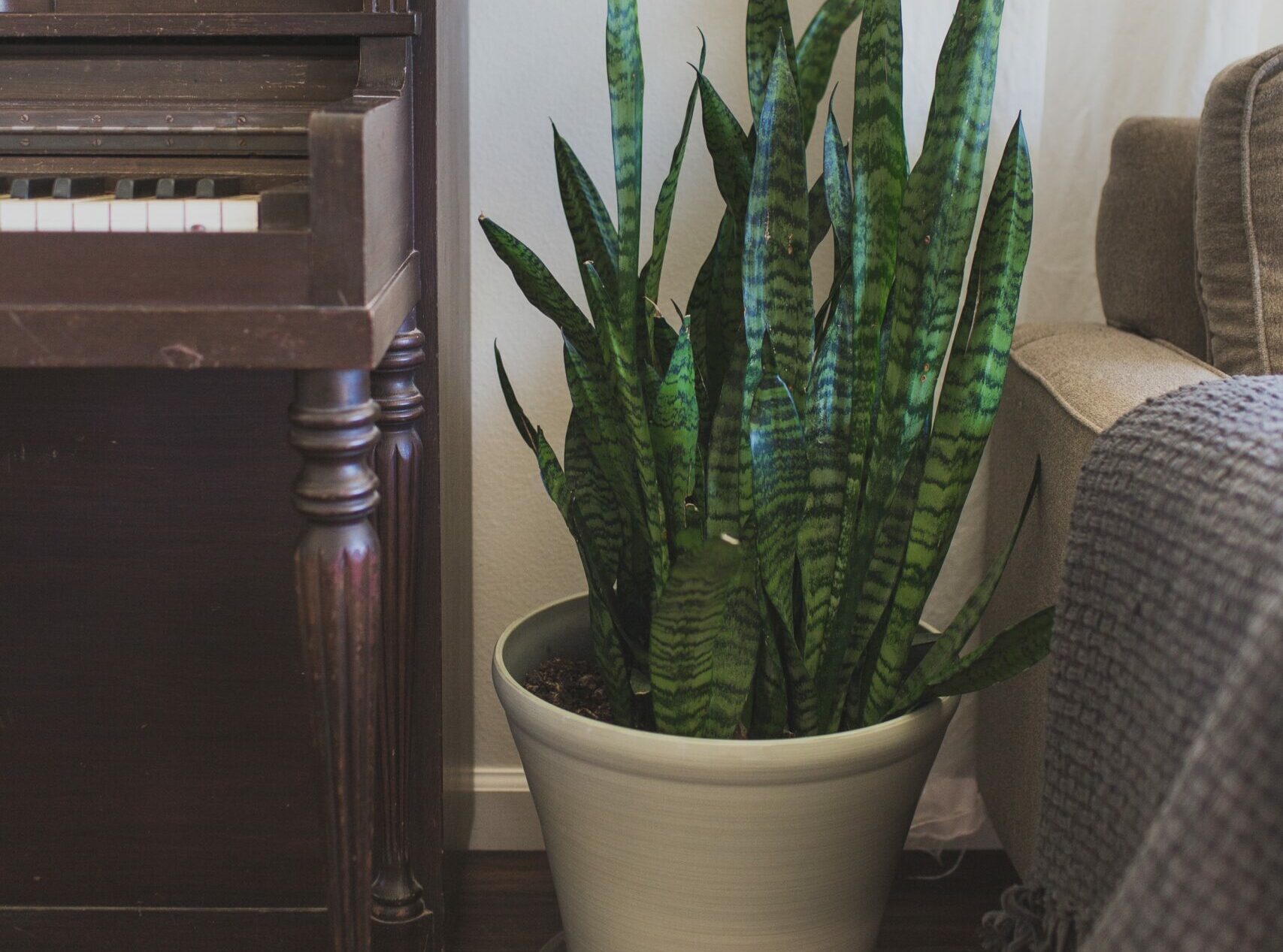
Pros for Snake Plant:
- It is a very hassle-free plant to own and take care of
- It can be neglected and still thrive
- It can help purify the air inside a building
Cons for Snake Plant:
- It is toxic
- It can grow up to 12 feet in height
Mandevilla Vine
This is a common plant to place in hanging pots, so it could make a great companion for a hanging Fishbone Cactus. Also, Mandevilla Vine produces beautiful and vibrantly colored flowers that make it an excellent way to add a pop of color to a garden scheme.
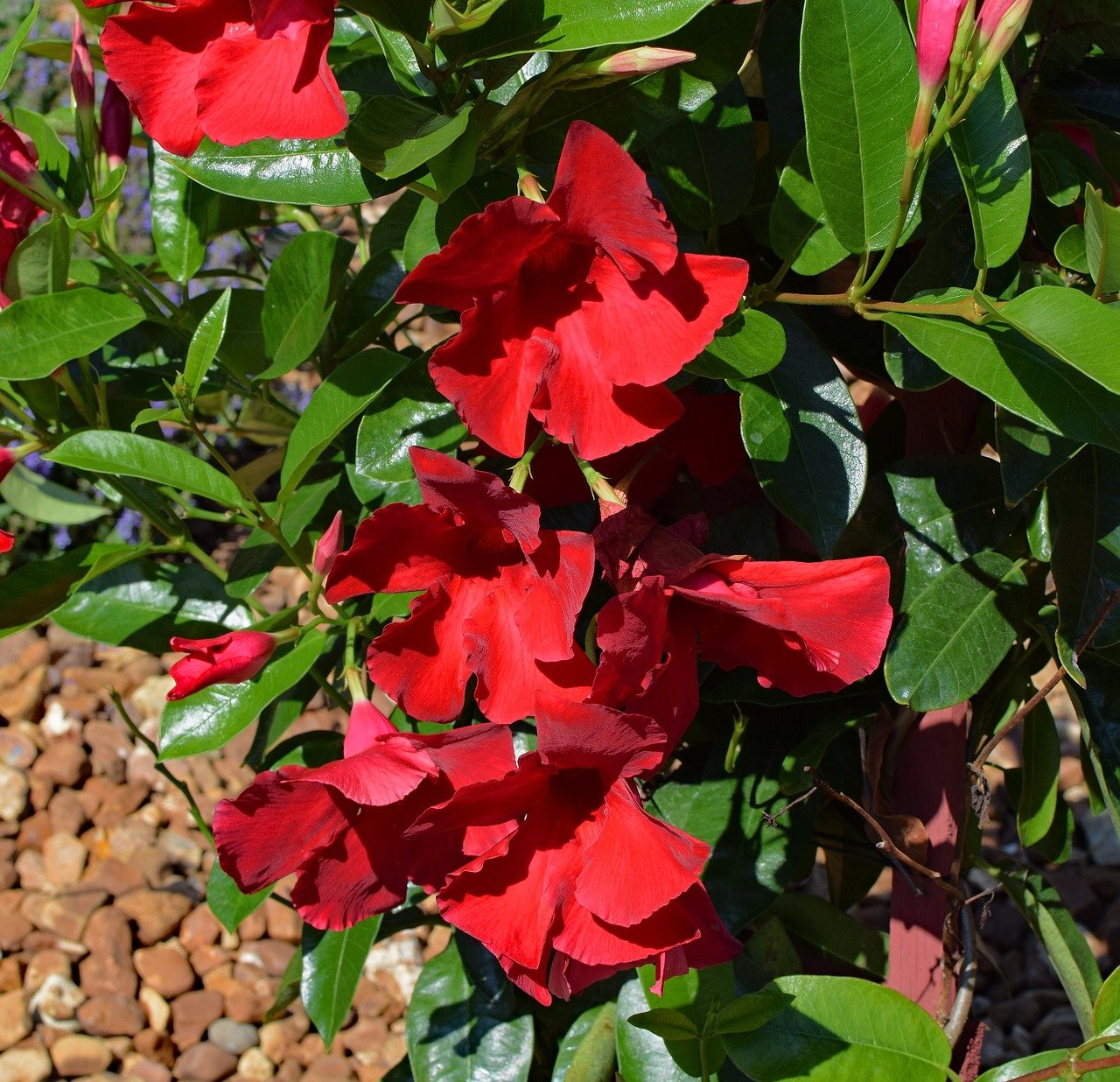
Pros for Mandevilla Vine:
- It is a beautiful blooming perennial
- It looks great in gardens and in planters
- It is relatively easy to care for
- It likes soil that is moist but not soggy, which is exactly how Fishbone Cactus likes its soil
Cons for Mandevilla Vine:
- It does not handle cold weather
- It can get sunburnt when set in direct sunlight
Jade Plant
If you are looking for something absolutely stunning to set next to your Fishbone Cactus, then a Jade Plant is the ideal plant of choice. This beautiful and delicate-looking succulent is going to add charm to any garden, whether indoor or outdoor. Jade Plant is also known as ‘Money Tree’ and is a popular gift item for those who are trying to bring good luck to friends and family.
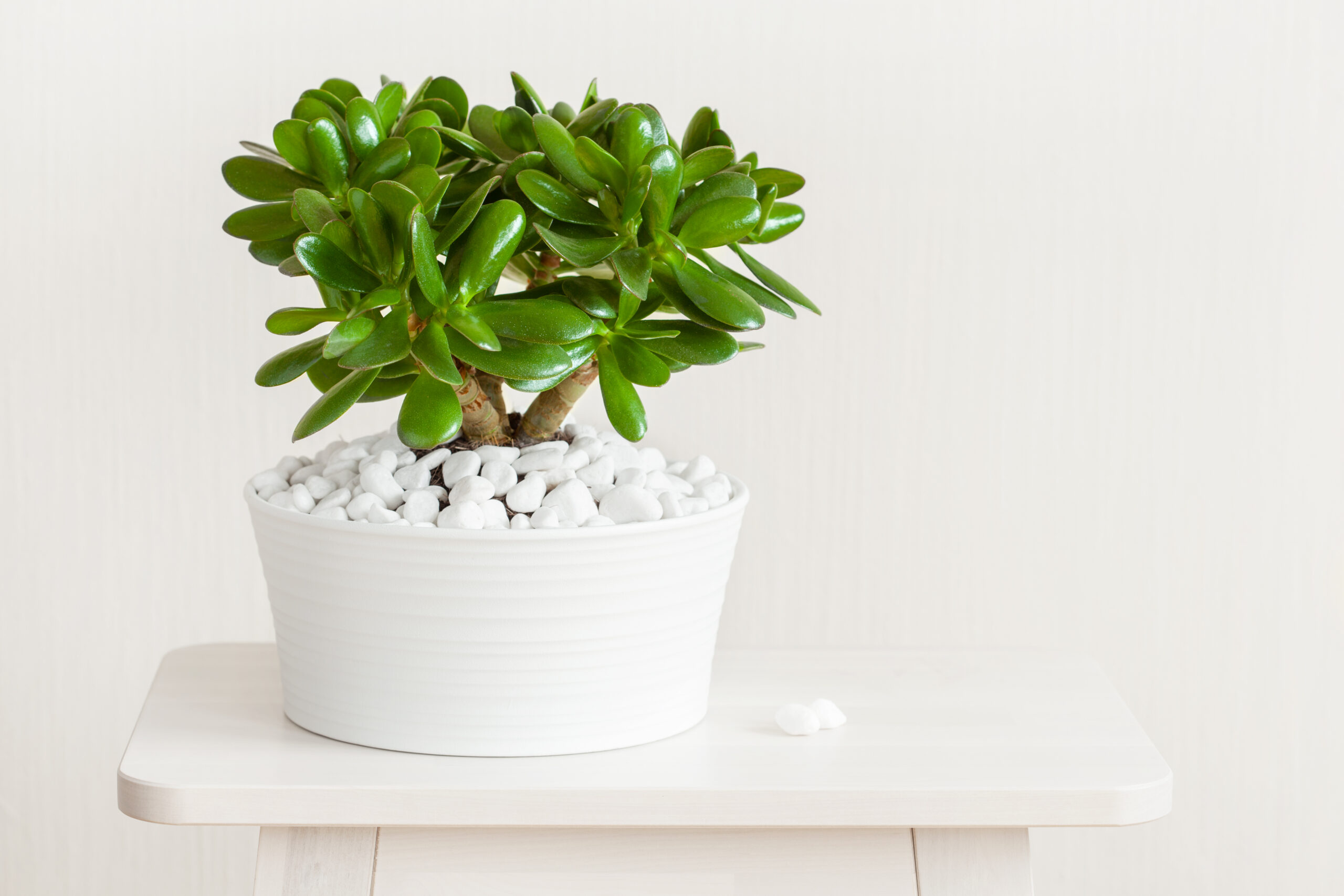
Pros for Jade Plant:
- It can thrive in full to partial sunlight
- It requires the same type of soil that Fishbone Cactus requires
- It is drought tolerant
Cons for Jade Plant:
- It cannot be planted in the ground outside of USDA Hardiness Zones 9 to 12
- It is susceptible to overwatering and root rot
Fishbone Cactus Diseases and Common Problems
The most common issues faced by Fishbone Cactus are overwatering and underwatering.
Fishbone Cactus Treatments and Maintenance
Overwatering
When a Fishbone Cactus gets too much water it can cause root rot and this will eventually kill the plant. The best way to prevent root rot is to learn how to properly water a Fishbone Cactus. But, if your plant is already dealing with the negative effects of overwatering (mushy leaves, yellowed leaves, transparent leaves, leaves that are falling out) then you will need to treat it immediately so that it has any chance of surviving.
Follow these steps to treat a Fishbone Cactus that has root rot:
Dry Out the Plant
Stop watering the plant immediately and set the plant’s container in a place that will allow the soil to drain off any excess water.
If the soil is unable to drain, you will need to remove the plant from the soggy soil, let it dry out for a few days, and then, replant it in dry soil.
Remove the Rotten Parts
Trim off any areas of the plant that are rotting, then allow the plant to callous for a few days. Without letting it callous, the chances of the succulent surviving are very slim.
Add Sulfur to the Root System
This technique should be done after the plant has been trimmed of all its rotted areas and allowed to callous. It will require that you dust a little sulfur on its root system to help prevent the spread of microbes.
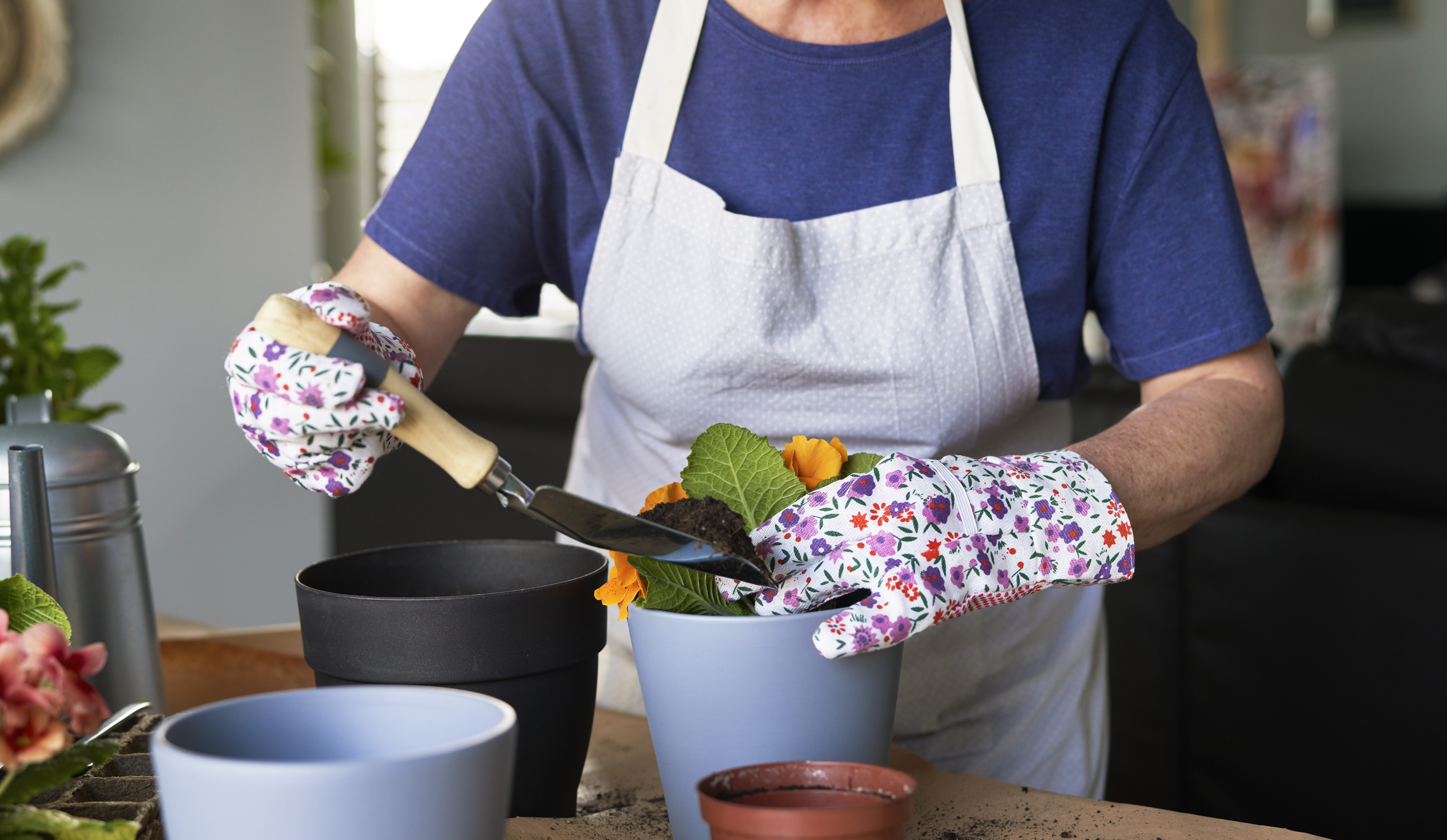
Behead the Plant
This is the last resort technique, but it may be necessary if any of the plants can be saved.
Underwatering
It is unusual to learn that a cactus can be susceptible to underwatering, but Fishbone Cactus is not a typical cactus. If you begin to notice that your Fishbone Cactus is looking unhealthy (dry leaves, aerial roots appearing more frequently), it is a good idea to check the plant’s moisture levels more frequently. It may be that your Fishbone Cactus just needs a good drink more often, or perhaps, a humidity tray.
Fishbone Cactus Repotting Instructions
This plant can be replanted as a whole plant into a bigger or better container or it can be replanted as a stem cutting to produce a completely new plant. Either way, the steps are simple. Let’s walk through the replanting process now.
- Put on a pair of gloves. Fishbone Cactus has tiny spikes on it that can prick your hands.
- Select a container that will drain off excess water. An unglazed pot is highly recommended.
- Select potting soil that will drain off excess water.
- If propagating via a stem cutting, cut off a piece of the stem with a sterile cutting utensil.
- Fill the selected container with the potting soil.
- Create a hole in the potting soil.
- Set the plant into the hole.
- Cover the plant’s roots with potting soil.
- Make sure the plant is securely set in the potting soil.
- If you have planted a stem cutting, there is no need to water until you see that it growing. If however, you have replanted a mature plant, you can water it as you normally would.
- Set the plant in a warm, sunny spot.

Where to Buy Fishbone Cactus Seeds Online
This type of cactus can be propagated via seed and if this is the way you prefer to grow one, consider purchasing seeds from one of these online shops:
Where to Buy Fishbone Cactus Plants Online
There are plenty of wonderful online shops where Fishbone Cactus can be purchased. These three online shops offer a great selection.
FAQs
Question: Does Fishbone Cactus Produce Blooms?
Answer: Yes, this cactus can produce pink, yellow, or white orchid-like flowers. Unfortunately, it is very rare that these plants bloom when kept indoors, and if they do bloom, it is only for one night.
Question: Is Fishbone Cactus Toxic?
Answer: No, this plant is not toxic to humans or animals.
Question: What Are Aerial Roots?
Answer: Aerial roots are the type of roots that grow on epiphytic plants, which is what a Fishbone Cactus is. Epiphytic plants are types of plants that do not need to settle in a lot of soil because they can anchor themselves to tree branches and grow on them. They get their nutrients from the air through their roots, which is why they are called aerial roots.
Question: Can Fishbone Cactus be Pruned?
Answer: Yes, the leaves of a Fishbone Cactus can grow long and unruly so they may need to be cut back from time to time. Simply cut the leaves back using a clean cutting utensil.
Concluding Thoughts
If you want to begin growing plants that are not a hassle, then you need to get a Fishbone Cactus. This is a very forgiving plant that easy to practice your gardening skills on and use as a fun and interesting piece of décor. Fishbone Cactus is a beautifully uncomplicated plant.
Research Citations
Read more related articles here:
- 5 Best Hanging Succulent Varieties That Are Must-Haves In Your Garden
- Ceropegia Woodii Variegata (Variegated String of Hearts) How To Grow Them Lush
- Stapelia Gigantea (Zulu Giant): Plant Care Guide For Beginners
- Lophocereus Marginatus (Mexican Fence Post Cactus) - January 10, 2022
- Best Cactus Fertilizer Guide - January 9, 2022
- Selenicereus Grandiflorus (Queen of the Night) - January 3, 2022

